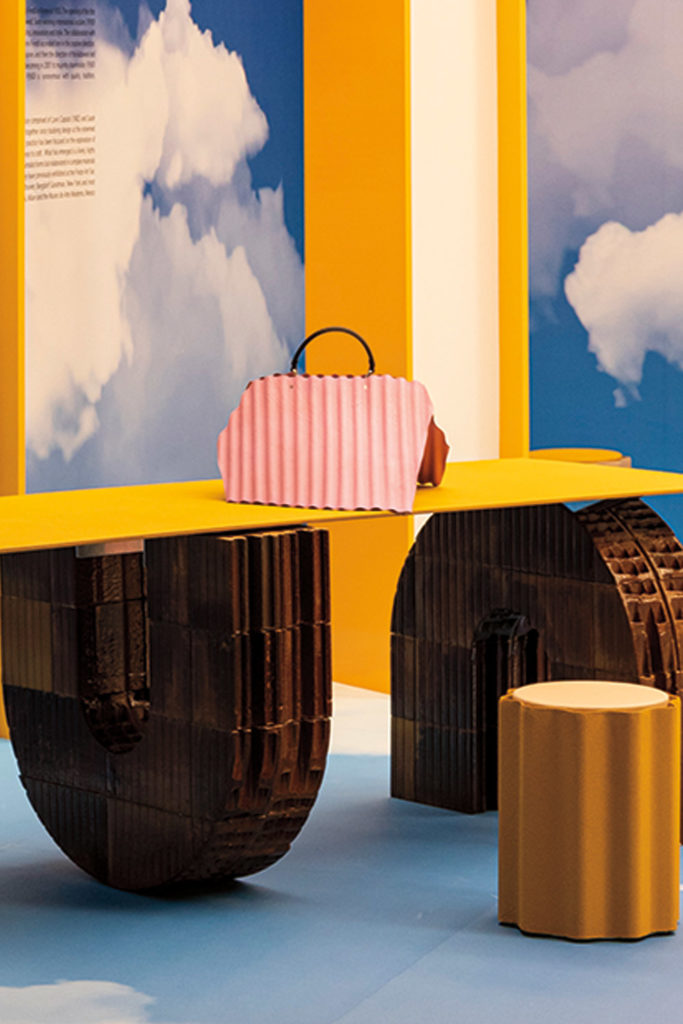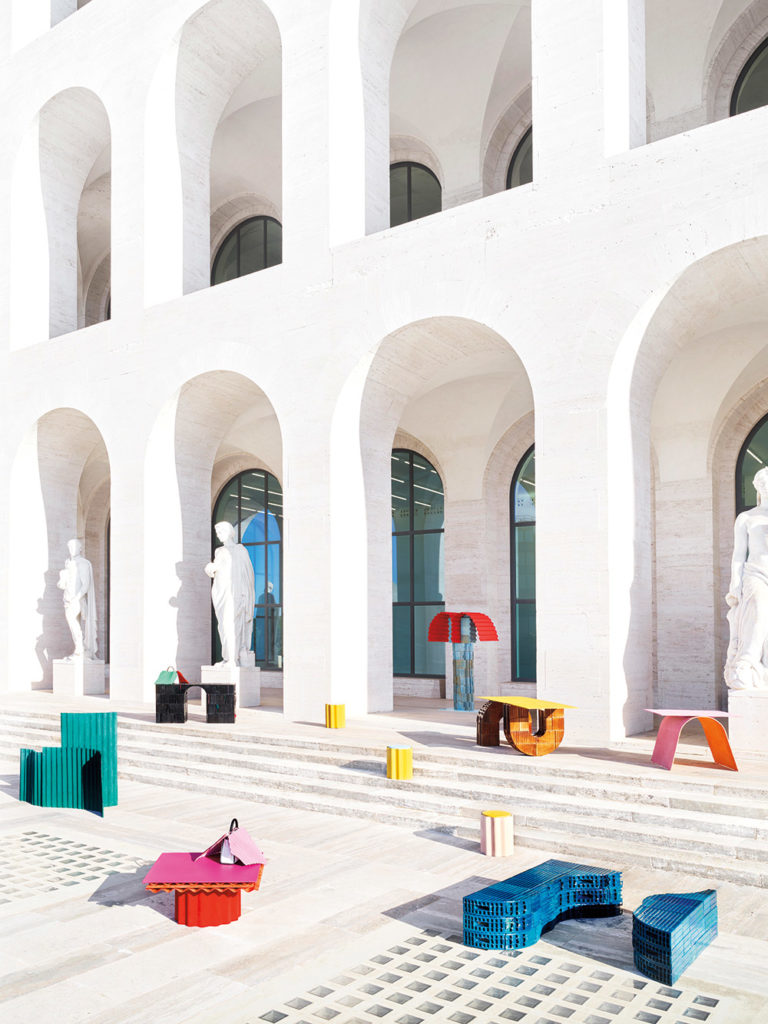A little piece of Rome was transported to Miami this past winter by way of Fendi’s latest dazzling design feat: an exhibition of experimental pieces inspired by its famed headquarters, Palazzo della Civiltà Italiana. The Roman Molds collection was created for Design Miami as a playful nod to the building and its famed travertine marble arch facade.
Often referred to as the Colosseo Quadrato or Square Colosseum, the architectural gem had a long history of sitting dormant; first, in the wake of the Second World War (it had originally been constructed by architects Giovanni Guerrini, Ernesto Bruno Lapadula, and Mario Romano as an imposing symbol of fascism in 1940), then through the late 20th century, before it was taken over as central hub for Fendi in 2015. Now, it is home to the house’s design and global corporate teams, an archive, and a gallery of its wares. With Roman Molds, the architectural icon has again been given new life through Kueng Caputo’s collection of 10 pieces envisioned as decor for its exterior. Featuring vivid hues and contrasting shapes, the pieces suggest a series of intimate “rooms” for socializing, escaping, and working on the grand loggias (terraces) of the Palazzo.

“We really wanted to highlight architecture, instead of a specific project,” says Silvia Fendi, Fendi’s creative director and lone family member still working for the historic house. “Lately, I am very interested in supporting women designers,” she says of Kueng Caputo, a Zurich-based duo made up of long-time design partners Sarah Kueng and Lovis Caputo.
“We are very fascinated by classic things,” Caputo told us of their starting point: a visit to Fendi HQ, where the duo spent hours poring over archival pieces. “We really appreciate that they know their craft and how they use that knowledge to pass their techniques and materials down from generation to generation,” continues Caputo.
The Palazzo’s endless repeating arches were mirrored in the pieces. Utilizing everyday materials such as brick and corrugated metal to contrast Fendi’s supple Romano leather, Kueng Caputo created deconstructed tables, several seating variations, and one abstracted palm tree sculpture that was meant to be the connective tissue between Miami and the Italian capital. Ironically, neither Kueng nor Caputo had been to the city before the fair, so when asked to compare their iteration to the real thing, they simply replied, “They’re much bigger here.”
 The pieces were exhibited against a sky-blue mural and large-scale arches in Fendi’s signature yellow hue: a tête- à-tête bench carved in dark green glazed brick sat at one corner, while two rippled stools were tucked into another. “You see bricks every day, but given the way this piece is cut, you see inside, and it’s something very Fendi-like,” says Kueng. Elsewhere, a bright pink “bow” table with a curved orange base was covered in leather, belying its metal interior. “Often, the inside is even more beautiful than the outside,” adds Kueng.
The pieces were exhibited against a sky-blue mural and large-scale arches in Fendi’s signature yellow hue: a tête- à-tête bench carved in dark green glazed brick sat at one corner, while two rippled stools were tucked into another. “You see bricks every day, but given the way this piece is cut, you see inside, and it’s something very Fendi-like,” says Kueng. Elsewhere, a bright pink “bow” table with a curved orange base was covered in leather, belying its metal interior. “Often, the inside is even more beautiful than the outside,” adds Kueng.
Amid the buzz of the annual design fair’s many novelties, the exhibit served as the basis for an exploration of Fendi’s DNA at its finest: smack dab at the intersection of craft and innovation. And its study in opposites—hard and soft, stately and playful—befits its future.
Photos courtesy of Fendi.

